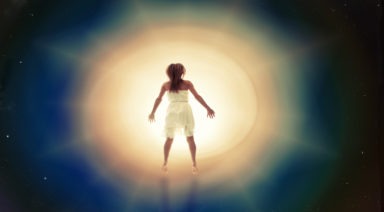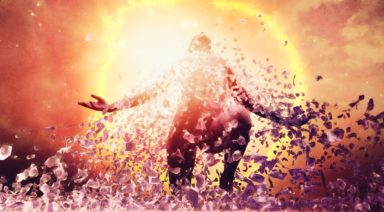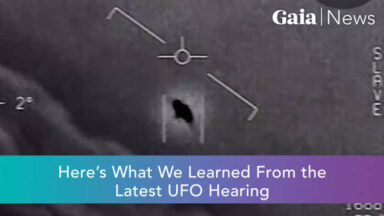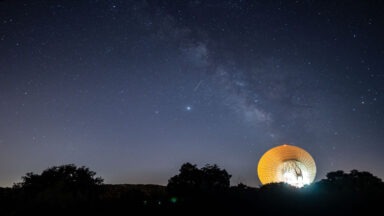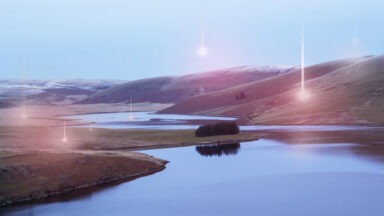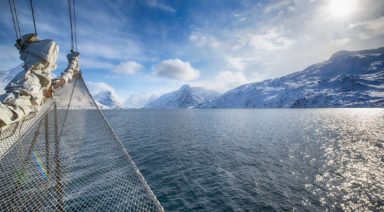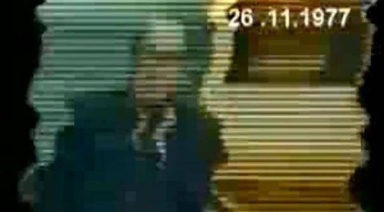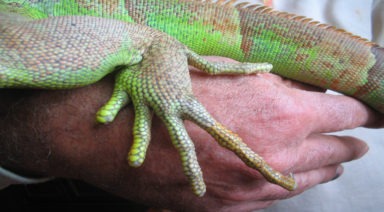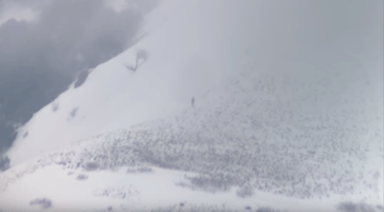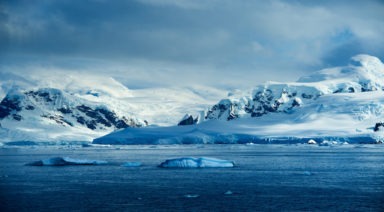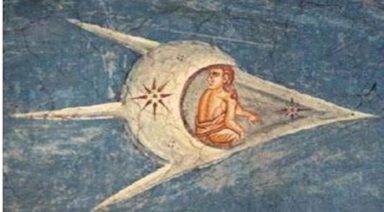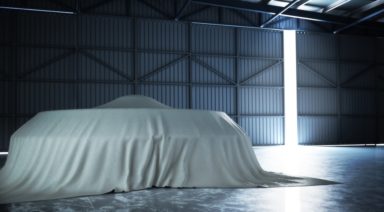The After Effects of a Near-Death Experience
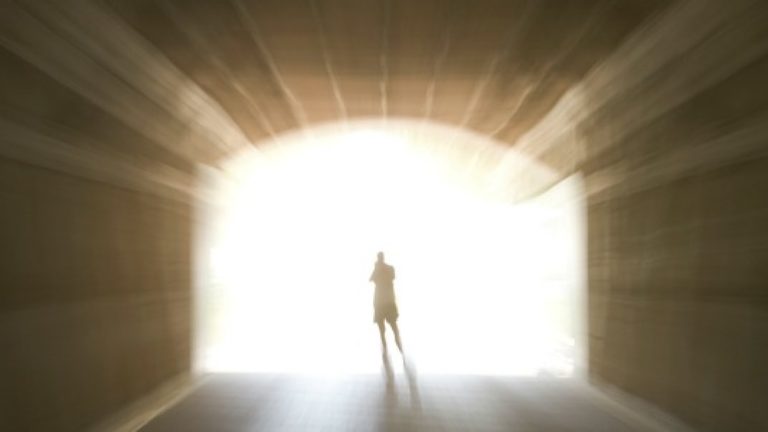
Stories of near-death experiences have existed for centuries. The subject is well researched yet the question remains: Is the origin of the near-death experience rooted in science or religion? Despite the continuous search for empirical explanations, accounts of near-death experiences and their aftereffects prevail.
Initially, aftereffects of a near-death experience can incite feelings of love while negative reports often express fear. Over time, aftereffects can stimulate psychosocial and psycho-spiritual deviations. Psychologists, school counselors and professionals in the medical field understand a need for intervention. Professionals can assist people who have near-death experiences by helping them integrate their experience, as well as provide support for family members.
The Question Remains: Is a Near- Death Experience Fact or Fiction?
Do we need to question our scientific world or spiritual space to understand near-death experiences? Stories from real people and their perceptions may shed some light upon clarifying the subject of near- death experiences.
Over several decades, many clinical cases have been recorded explaining events of people having life-changing experiences of dying, then coming back. This mysterious phenomenon has been named “near- death experience”, or “NDE.” According to the 2006 article Near-Death Experiences and Spirituality by Bruce Greyson, many stories revealed common features such as bright lights, tunnels and feelings of joy.” Furthermore, investigators collected data and found similar features including helping others more often, amplified compassion, spiritual versus religious inclination, and an overall disposition of gratitude and appreciation for life.
History of Near-Death Experiences
Stories of near-death experiences have been reported by many different cultures throughout several eras. The 2009 article Near-Death Experiences and Psychotherapy by LJ Griffith retells the story of a near-death experience: “Plato recounted a tale of a soldier who seemed to be dead, but came back to life explaining he had visited another world.” Global accounts of near-death experience stories “originate from Israel to South America,” Griffith states.
Raymond Moody is considered the pioneer of near-death studies in the mid-1970s. The main focus of his studies was to look at the actual experience and aftereffects. In 1975 Moody published Life After Life, which initiated further research and public interest. Moody’s book ignited over 50 research teams who published more than 55 studies involving a wide cultural span. According to the 2001 article A Hawaiian Near-Death Experience by Allen Kellehear, data collected on near-death stories spans the experiences of over 3,000 people practicing a range of religions.
Research on Near-Death Experiences
Research on near-death experience caught the interest of professionals in a variety of fields. According to Christian Agrillo’s 2011 Near-Death Experience: Out of Body and Out of Brain? research on near-death experiences is considered a valued subject in the field of cognitive neuroscience. The mystery of whether an afterlife exists represents an extremely important topic in philosophy as well. Additionally, Griffith discusses how researchers involved in near-death experiences include physicians, nurses, chaplains and psychologists – and some have written substantially on the subject.
Despite the amount of research on near-death experiences, a roadblock remains regarding what exactly a near-death experience is. Agrillo explains that some investigators have attributed roadblocks to the reality that the process of death and subjective manner in which we die is still a topic of limited knowledge.
Definition of a Near-Death Experience
Psychological and physiological models postulated in the past have failed to pass empirical investigations thus limiting a clear definition of a near-death experience. Research has involved exhaustive interviews resulting in categorical evidence. According to the 2010 article by KE Bell on How School Counselors Can Assist Student Near-Death Experiences, the results of interviews from several studies indicate patterns that define a near-death experience.
In Greyson’s 1999 article Defining Near-Death eExperiences, Greyson described twelve to fifteen consistent themes and features that were discovered on near-death experiences:
- An awareness of being above your body or dead
- Rise in joy or euphoria
- Entering a space or sometimes tunnel
- Seeing or feeling a very bright white light
- A sense of a being in a peaceful, beautiful or sometimes frightening place
- Encounter with loved ones who have previously passed on
- Angel type beings, guides or religious figures
- Some form of a life review which often involves experiencing deep emotion associated with ones actions
- A choice or perception that one has to come back
After effects
What happens after experiencing the near-death experience phenomenon? Often experiences result in positive, sometimes profound aftereffects such as a sense of bliss and euphoria in their lives. Many people find their personality has changed in addition to different beliefs and attitudes toward subjects in religion and death. Furthermore, Griffith explains that physiological transformations such as experiencing heightened sensation to noise or other senses, increased or decreased need for sleep and some level of sensitivity toward electromagnetic were described by people interviewed.
Religion
While examining the subject of religion, researchers found profound changes in near-death experiencers. According to Greyson’s 1999 article, interviews found the most often reported alteration in life was that of a spiritual matter. Additionally, reports of a stronger concern or empathy for others, a solid sense of purpose, closeness to God and an aversion to conventional religious practices were recorded. Not surprisingly, as reported in the same article, newfound characteristics parallel the definition of a spiritual transformation which often encompasses an authentic love for others on a large scale.
Negative Near-Death Experiences
Occasionally people report emotional turmoil and negative aftereffects. Psychological changes implicated include higher levels of neurotic anxieties depending on the specific interpretation of the event. Agrillo said that “nightmares, depression, isolation and conflicted relationships have occurred as well.” Specifically, researchers placed unpleasant near-death experiences into three categories; frightened or out of control, feeling utterly alone and horrific imagery like dark landscapes, ugly creatures or painfully loud noises.
Implications for Help
Often, individuals who experience a distressing near-death experience will interpret the event as a sign or warning. He or she will attempt to alter their life in some way. A second group will find a rational explanation for the event, such as a seizure or some sort of brain or nervous system dysfunction. Finally, and perhaps the hardest way to adapt to the situation is the aftereffect of feeling as if you are in a void. According to Bell, “people in the last group question why this happened to them and attempt to make some sense from the experience”. Furthermore, the latter group is most likely to seek counseling or therapy.
People who experience both positive and negative near-death experiences’ may need help integrating their new disposition in life; particularly the negatives as well as children who are less prone to disclose or process the experience. Moreover, a person’s family may benefit from counseling or therapy as a result of not knowing how to maintain the relationship with a person whose characteristics and major beliefs have changed. “Family members can feel hurt, confused and even angry over the event and the changes that followed the near-death experience,” Griffith said.
Professional Help
Professionals are willing and open to helping a person process their near-death experience. Hospice workers, pastors, psychologists and counselors are both accepting and helpful in cases of near-death experiences and are writing about ways they can help. According to the 2007 article by Steven Rice Insights on Near-Death Memories, a pastor of 20 years mentioned he has been changed because of the accounts he has heard over the years of near-death experiences. The pastor had seen people close to death who showed no fear and seemed eager to die (regardless of their religion).
Professionals have begun formulating and inducting programs for adults and children who need help integrating their near-death experience. The challenge has been, and may still be the practitioner or counselor’s judgment regarding the phenomenon. “Psychologists suggest when working with a patient who has had a near-death experience to be wary of your own belief on the topic; normalizing, integrating and avoiding assumptions of pathology are guidelines suggested,” Griffith states.
Bell explains that school counselors are asked to adapt an understanding of a near-death experience and what the signs might look like in a child. Currently, there are several resources through medical and psychological avenues that can guide counselors. Counselors can use active listening skills as they continue to be mindful of judgments or self-interpretations of a near-death experience. If successful, a school counselor can assist a student in personal, social and academic areas.
Whether near-death experiences occur from a physiological aspect or a psychological one, the result is the same; most people who have near-death experiences proclaim vast life changes with positive, negative or mixed undertones.
The field of psychology and near-death experience is limited, but promising, as professionals adapt an understanding. Counselors, pastors and doctors realize the need for help and the importance of sustaining judgment. In contrast, Greyson explains how “research does not reflect accurate data due to the number of unreported cases and sometimes skeptical view of the phenomenon.”
Perhaps as we learn more about near-death experiences and their aftereffects we might begin to understand what the essence of life means. Do the people who die and come back do so to send messages? Maybe they hold the key to the mysteries of life and death. Only time, patience and an open mind might explain the near-death experience.
Tell Your Near-Death Story
- Do you have a story about a near-death experience?
- Do you believe that near-death experiences are fact, or fiction? Why?
- What, if anything, can be taken away from a near-death experience?
- Do you believe the explanation of Near-death Experience is based from science or religion? Why?
- Do you think there might be a call for support or education around near-death experience?
Share your stories on Write for Gaia.
How To Tell if Your House Is Haunted? 16 Signs To Look For
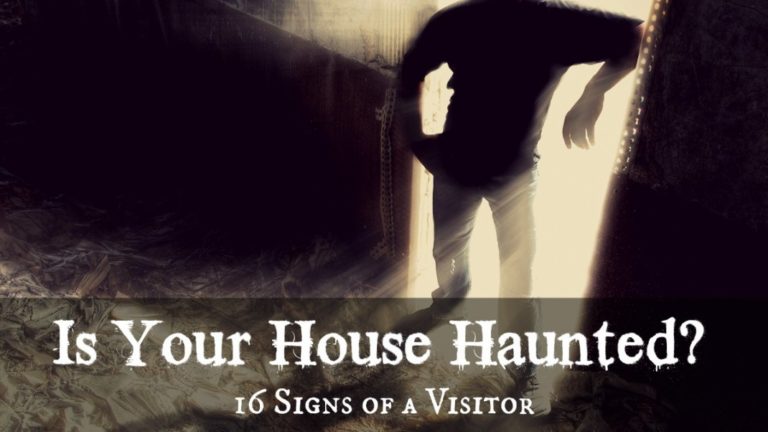
Are you encountering strange sounds, items disappearing, or lights turning on randomly in your home? These may be telltale signs that your house is haunted. All hauntings are different and can vary from hearing a door slamming occasionally to seeing full apparitions. Commonly believed to occur only in old homes in the middle of the night, as seen in many horror movies, hauntings have also been investigated in new homes and can occur in broad daylight.
Not every mysterious noise or vision has a logical explanation. It’s important to understand if your house is haunted to determine the appropriate steps to take.
Common Signs of a Haunted House
If you noticed these early warning signs, then someone else or something else could be occupying your home:
1. Unexplained Noises
These strange noises can include footsteps, knocking, banging, scratching, or something being dropped. These noises can be subtle, and at other times, they can be quite loud.
2. Doors, Cabinets, and Cupboards Opening and Closing
Very rarely will the experiencer ever witness this phenomenon take place. Most often, the experiencer will hear creaks as a door opens or closes, and when investigated, the door is typically in the opposite position it was previously.
3. Lights Turning Off and On
Lights will turn on and off when the experiencer knows they previously left it on or off. This occurrence is also rarely witnessed. This can also happen to electrically powered devices like TVs and radios.
4. Items Disappearing and Reappearing
This phenomenon is called the DOPler Effect (DOP = Disappearing Object Phenomenon). Experiencers will place an everyday object in a typical spot in the house. Later, when they retrieve that item, it is gone and nowhere to be found after a thorough search. Hours, days, or weeks later, the object reappears in the exact position it was left in before it went missing.
5. Unexplained Shadowy Figures
Fleeting shadows are normally seen out of the corner of your eyes. These shadows typically take human forms, also known as Shadow People, while at other times, they are less distinguishable or smaller.
6. Strange Animal Behavior
Dogs will sometimes bark at something unseen, cower without reason, or refuse to enter a room they normally do. While cats seem to be watching something move about the room. Animals do have sharper senses than humans, and many researchers feel their psychic abilities are allowing them to notice this behavior quicker and better.
7. Feelings of Being Watched
Many people tend to get the feeling of being watched throughout the day, but if the feeling is consistently occurring in a specific part of the house at a particular time, it may be attributed to supernatural forces.
Stronger Signs of a Haunted Home
These next signs are rarer paranormal activity but could be stronger proof of a haunting:
8. Mild Psychokinetic Phenomena
Actually seeing a door open or close, a flickering light bulb, or a child’s toy turn on by itself. Others state they can hear or feel something sitting on the bed next to them.
9. Feelings of Being Touched
Some feel something brush past them, touch their hair, or a “hand” on their shoulder. Others can feel a gentle poke, push, or nudge.
10. Strange Sounds
Some can hear voices, whispering, crying, or even music from an unknown source.
11. Notable Temperature Changes
Cold spots in your house are one sign that your home could be haunted.
12. Unusual Smells
A fragrance of perfume or cologne that does not exist in your house. This phenomenon may be accompanied by shadows, voices, or psychokinetic phenomena.
Powerful Signs of a Paranormal Presence
Poltergeist activity is rare but is the strongest evidence of a true haunting:
13. Severe Psychokinetic Phenomena
Some instances of this phenomenon include plates sliding off the table, pictures flying off the walls, doors slamming with great force, or furniture sliding across the floor.
14. Physical Assault
This type of phenomenon is very rare but includes scratches, slaps, and hard shoves.
15. Other Physical Evidence
This can include unexplained writing on paper or walls, handprints, and footprints.
16. Apparitions or Ghostly Figures
This very rare phenomenon is a physical manifestation of a spirit or entity. These human-shaped forms can be seen as mist, transparent, or solid.
My House is Haunted, Now What?
If you suspect that your house is haunted, you have several options. Firstly, consider keeping a journal to document any unusual occurrences and their frequency. It may also be helpful to consult with a reputable paranormal investigator or psychic medium to assess the situation and provide support. Furthermore, you can perform cleansing rituals or prayers to create a sense of peace and protection in your home. Finally, if the paranormal activity persists and you feel unsafe, consider relocating to a new residence. Yes, this is particularly challenging for homeowners, but the alternative is having an evil spirit for a roommate.
Communicating with Spirits and Risks
While communicating with spirits can be tempting, it’s essential to approach such interactions with extreme caution due to the real-life dangers involved. Engaging in practices like using Ouija boards or participating in séances can open channels to the spirit world, inviting not only communication with loved ones but with negative energies or malevolent entities. Bad encounters can lead to emotional distress, psychological instability, or spiritual attachment if proper precautions are not taken. So, it’s crucial to be mindful of one’s intentions and boundaries when attempting to communicate with spirits and seek guidance from paranormal experts to ensure your safety.




